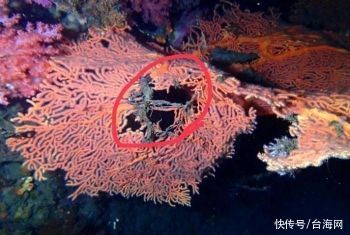Source: China News Network
According to a report by Taiwan’s “United Daily News” on July 15, the slowdown of the epidemic and the hot weather have led to a significant increase in divers in the Chaojing Bay Reserve in Wanghai Lane, Keelung City. However, the museum found that the beautiful corals in the bay were broken by large fans, broken rose corals and other phenomena that were damaged by diving guests. The big fan is widely popular among potential friends who like to punch in and take photos, but there are broken branches and a large mesh-shaped hole, which makes the conservation staff feel distressed.

The beautiful sea fan coral in Tidal Bay was destroyed by diving guests. Photo source: “United Daily News” (provided by the Haike Museum)
After the good news such as the spawning of sponges and the appearance of the blue octopus in the marine resources reserve, there are regrets recently. Fractures, broken rose corals and other man-made damages have been investigated and dealt with by the city government and relevant units.
The Haike Museum said that the Chaojing Bay has become a popular water activity site in northern Taiwan. There are a variety of water activities here, including free diving, snorkeling, scuba diving and stand-up paddle. But at the same time as the crowd increased, a large sea fan, which was widely used by diving friends to check in and take photos, first appeared broken, and the sea fan also broke a net-shaped hole.
The Haike Museum pointed out that the growth of sea fans is extremely slow, and it takes more than 5 to 60 years for sea fans with a diameter of more than 1 meter to reach such a size. It was kicked or smashed.
Then another divers heard that the beautiful rose coral garden was also smashed into a hole, and it was found that free diving had set a floating and unfixed anchor in the water. will hit the coral.
In addition, through the underwater live broadcast of the Ocean Science Museum, I also saw scuba divers with poor underwater buoyancy control who inadvertently kicked off a piece of coral; and scuba diving with cameras If the photographer is too focused on taking pictures, the frog’s feet will kick all the way to the underwater live broadcast camera, almost breaking the camera.
The Ocean Science Museum reminds those who are engaged in underwater activities in the bay to pay attention to the surrounding corals and creatures, as well as the location of the recording facilities, whether they are setting anchors or conducting activities, so as to prevent further damage from occurring. Penalties can also be avoided.
Chen Sufen, curator of the Ocean Science Museum, appealed to the public to carry out water activities without trace. This is also the concept of underwater eco-tourism. After the activity, no creatures should be damaged, and the ecology must remain intact. Let the function of the tideland conservation area continue to play. (Source: Chinanews.com)